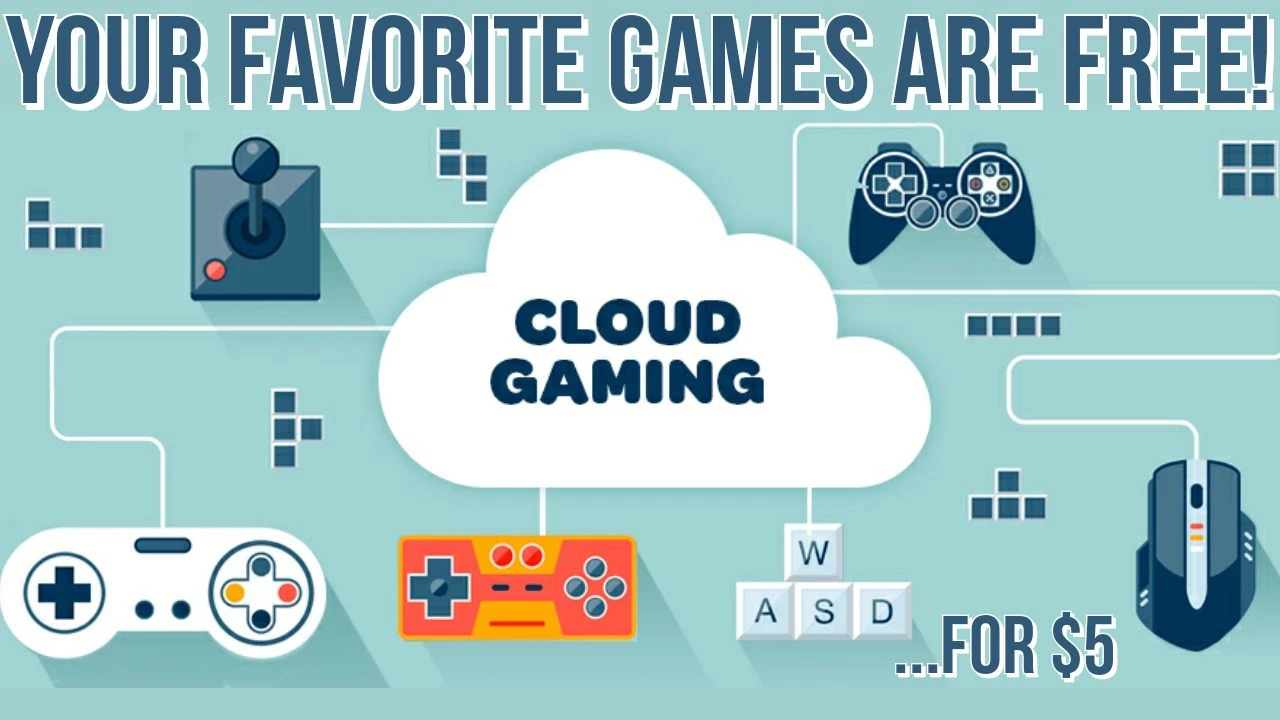
Explore the evolving landscape of work with key tech trends for hybrid work models. From collaboration tools to virtual reality meetings.
The Future of Work Tech Trends for Hybrid Work
Understanding Hybrid Work Models and Their Evolution
The concept of work has undergone a seismic shift in recent years, largely accelerated by global events. The traditional office-centric model has given way to more flexible arrangements, with hybrid work emerging as a dominant paradigm. Hybrid work, at its core, blends remote work with in-office presence, offering employees the flexibility to choose where and how they work best. This model isn't just a temporary fix; it's a fundamental redefinition of the workplace, driven by a desire for greater autonomy, improved work-life balance, and access to a wider talent pool. The evolution of hybrid work has been rapid, moving from an emergency response to a strategic choice for many organizations. This shift necessitates a re-evaluation of the technological infrastructure that supports productivity, collaboration, and employee well-being across distributed teams.Essential Collaboration Tools for Seamless Hybrid Workflows
Effective collaboration is the cornerstone of any successful hybrid work model. Without the right tools, communication can break down, projects can stall, and team cohesion can suffer. The market is flooded with collaboration platforms, each offering a unique set of features. Here, we'll delve into some of the leading contenders, comparing their strengths, ideal use cases, and pricing structures.Microsoft Teams: The Integrated Powerhouse for Enterprise Collaboration
Microsoft Teams has become an indispensable tool for many enterprises, offering a comprehensive suite of features that integrate seamlessly with the broader Microsoft 365 ecosystem. It combines chat, video conferencing, file sharing, and application integration into a single platform. Its strength lies in its deep integration with Word, Excel, PowerPoint, and Outlook, making it a natural choice for organizations already invested in Microsoft products. For large organizations, its robust administrative controls and security features are a significant advantage.- Key Features: Persistent chat, video meetings (up to 1,000 participants), screen sharing, file sharing, co-authoring documents, custom apps, robust security.
- Ideal Use Case: Large enterprises and organizations heavily reliant on Microsoft 365, seeking an all-in-one communication and collaboration platform.
- Pricing: Included with Microsoft 365 Business Basic ($6.00 user/month), Business Standard ($12.50 user/month), and Enterprise plans. Free version available with limited features.
- Pros: Deep integration with Microsoft 365, comprehensive feature set, strong security, scalability.
- Cons: Can be resource-intensive, interface can feel cluttered for new users, some advanced features require higher-tier subscriptions.
Slack: The Agile Communication Hub for Dynamic Teams
Slack has long been a favorite among tech companies and agile teams for its intuitive interface and powerful communication features. It excels at real-time messaging, channel-based organization, and extensive third-party integrations. Slack's strength lies in its ability to foster quick, informal communication and its vast app directory, allowing users to connect with hundreds of other services.- Key Features: Channel-based messaging, direct messages, voice and video calls, file sharing, extensive app integrations, custom emojis.
- Ideal Use Case: Startups, small to medium-sized businesses, and teams prioritizing rapid communication and integration with a wide array of tools.
- Pricing: Free version available with limited message history. Pro ($7.25 user/month), Business+ ($12.50 user/month), and Enterprise Grid plans.
- Pros: User-friendly interface, excellent search functionality, vast integration ecosystem, fosters quick communication.
- Cons: Can lead to information overload if not managed well, video conferencing features are less robust than dedicated platforms, pricing can add up for larger teams.
Zoom: The Video Conferencing Standard for Virtual Meetings
While many platforms offer video conferencing, Zoom has become synonymous with virtual meetings due to its reliability, ease of use, and robust feature set. It's particularly strong for external meetings, webinars, and large-scale virtual events. Its breakout rooms, virtual backgrounds, and polling features enhance engagement in online sessions.- Key Features: High-quality video and audio, screen sharing, virtual backgrounds, breakout rooms, polling, webinar functionality, recording.
- Ideal Use Case: Organizations requiring frequent and reliable video conferencing, webinars, and large virtual events.
- Pricing: Free version (40-minute limit for group meetings). Pro ($149.90/year/license), Business ($199.90/year/license), and Enterprise plans.
- Pros: Excellent video and audio quality, user-friendly, wide adoption, robust features for large meetings.
- Cons: Can be susceptible to 'Zoom fatigue,' security concerns have been raised in the past (though largely addressed), less integrated with other productivity tools compared to all-in-one platforms.
Advanced Technologies Shaping the Hybrid Workplace
The future of hybrid work extends beyond basic communication tools. Emerging technologies are poised to revolutionize how we interact, collaborate, and manage our work in distributed environments.Virtual Reality and Augmented Reality for Immersive Collaboration
VR and AR are no longer confined to gaming; they are rapidly making their way into the enterprise. Imagine conducting a meeting in a virtual conference room where everyone feels present, regardless of their physical location. Or collaborating on a 3D design project where team members can manipulate virtual objects in real-time. These technologies offer a level of immersion and interaction that traditional video calls cannot match.- Use Cases: Virtual meetings and conferences, collaborative design and prototyping, remote training and onboarding, virtual showrooms.
- Product Examples:
- Meta Quest 3: A standalone VR headset offering a blend of VR and mixed reality capabilities. Ideal for immersive meetings and collaborative design. Price: Starting at $499.99.
- Microsoft HoloLens 2: An untethered mixed reality device designed for enterprise use, particularly in fields like manufacturing, healthcare, and education. Price: Approximately $3,500.
- Spatial: A collaborative VR platform that allows users to meet, share content, and collaborate in 3D virtual spaces. Integrates with various file types and productivity tools. Pricing: Free tier available, paid plans for advanced features.
- Comparison: Meta Quest 3 is more consumer-friendly and accessible for general VR collaboration, while HoloLens 2 is a high-end enterprise solution for specific AR applications. Spatial is a software platform that runs on various VR/AR hardware.
Artificial Intelligence and Machine Learning for Enhanced Productivity
AI and ML are already embedded in many of our daily tools, but their potential in hybrid work is immense. From intelligent meeting summaries to personalized productivity insights, AI can streamline workflows and reduce cognitive load. AI-powered tools can analyze communication patterns, identify potential bottlenecks, and even suggest optimal meeting times across different time zones.- Use Cases: Automated meeting transcription and summarization, intelligent scheduling, personalized learning and development, sentiment analysis in team communication, predictive analytics for project management.
- Product Examples:
- Otter.ai: An AI-powered meeting assistant that transcribes conversations in real-time, generates summaries, and identifies action items. Integrates with Zoom, Google Meet, and Microsoft Teams. Pricing: Free tier available, Pro ($16.99/month), Business ($30/month).
- Notion AI: Integrated into the Notion workspace, Notion AI can help with writing, brainstorming, summarizing documents, and generating content. Pricing: Add-on to Notion plans, starting at $10/month per member.
- Calendly: While not purely AI, Calendly uses intelligent algorithms to simplify scheduling by finding mutually convenient times, reducing email back-and-forth. Pricing: Free Basic, Standard ($10/month), Teams ($16/month).
- Comparison: Otter.ai focuses on meeting intelligence, Notion AI on content creation and summarization within a workspace, and Calendly on intelligent scheduling.
Digital Whiteboards and Interactive Displays for Hybrid Brainstorming
Bridging the gap between physical and virtual brainstorming sessions is crucial for hybrid teams. Digital whiteboards and interactive displays allow remote and in-office participants to collaborate on ideas in real-time, fostering creativity and engagement. These devices offer touch capabilities, digital ink, and integration with cloud-based collaboration platforms.- Use Cases: Brainstorming sessions, design sprints, interactive presentations, remote teaching and training.
- Product Examples:
- Microsoft Surface Hub 2S: A powerful all-in-one digital whiteboard and collaboration device designed for team meetings. Features a large touchscreen, integrated camera, and speakers. Price: Starting around $9,000 for the 50-inch model.
- Google Jamboard: A collaborative digital whiteboard integrated with Google Workspace. Offers a touch-enabled display and real-time collaboration features. Price: Discontinued for new sales, but existing units are still supported. Software-only version (Jamboard app) is free.
- Miro: A popular online collaborative whiteboard platform that can be used on any device, including interactive displays. Offers a vast array of templates and tools for visual collaboration. Pricing: Free Basic, Team ($10/member/month), Business ($16/member/month).
- Comparison: Surface Hub 2S is a premium hardware solution for dedicated meeting spaces, while Miro is a versatile software platform that can be used on various devices, including less expensive interactive displays. Google Jamboard was a hardware-software combo, now primarily a software solution.
Optimizing the Hybrid Office Space with Smart Technology
The physical office space in a hybrid model needs to evolve from a traditional cubicle farm to a dynamic hub for collaboration, innovation, and social connection. Smart office technologies play a vital role in making these spaces efficient, flexible, and appealing.Smart Room Scheduling and Occupancy Management
Efficiently managing shared resources like meeting rooms and hot desks is critical in a hybrid environment. Smart room scheduling systems allow employees to easily book spaces, view real-time availability, and even check into rooms. Occupancy sensors can provide valuable data on space utilization, helping organizations optimize their office layouts and resource allocation.- Use Cases: Meeting room booking, hot desk management, space utilization analytics, energy efficiency through automated lighting/HVAC based on occupancy.
- Product Examples:
- Robin: A comprehensive workplace platform offering desk booking, room scheduling, and space analytics. Integrates with calendars and provides real-time occupancy data. Pricing: Custom quotes based on organization size and features.
- Envoy: Known for visitor management, Envoy also offers desk and room booking solutions, helping manage flexible workspaces. Provides insights into space usage. Pricing: Free for basic visitor management, paid plans for advanced features and desk/room booking.
- Teem (by iOFFICE + SpaceIQ): Offers a suite of workplace management tools, including room scheduling, desk booking, and space analytics. Focuses on creating a seamless employee experience. Pricing: Custom quotes.
- Comparison: All three offer robust room and desk booking, with Robin and Teem providing more in-depth space analytics, while Envoy is strong in visitor management alongside space booking.
Intelligent Building Management Systems for Energy Efficiency and Comfort
Smart building technologies can significantly enhance the comfort and sustainability of hybrid office spaces. These systems integrate various building functions – HVAC, lighting, security, and access control – to optimize energy consumption, improve air quality, and create a more pleasant working environment. AI-powered analytics can predict occupancy patterns and adjust building systems accordingly.- Use Cases: Automated climate control, smart lighting, predictive maintenance, enhanced security, air quality monitoring.
- Product Examples:
- Siemens Desigo CC: A comprehensive building management system that integrates various disciplines like HVAC, lighting, fire safety, and security. Offers advanced analytics and automation. Pricing: Enterprise-level solution, custom quotes.
- Honeywell Forge: A suite of software solutions for building operations, including energy management, occupant experience, and security. Leverages AI and machine learning for optimization. Pricing: Enterprise-level solution, custom quotes.
- Verdantix Smart Building Platforms: While not a single product, many vendors like Johnson Controls, Schneider Electric, and ABB offer integrated smart building platforms that combine hardware and software for comprehensive management. Pricing: Varies widely based on project scope.
- Comparison: These are all enterprise-grade solutions from major players in the building technology sector, offering highly customizable and scalable systems for large commercial properties.
Ensuring Cybersecurity and Data Privacy in a Distributed Workforce
The shift to hybrid work introduces new cybersecurity challenges. With employees accessing company data from various locations and devices, the attack surface expands. Robust security measures are paramount to protect sensitive information and maintain compliance.Zero Trust Security Models for Enhanced Data Protection
Zero Trust is a security framework that operates on the principle of 'never trust, always verify.' It assumes that no user or device, whether inside or outside the network perimeter, should be trusted by default. Every access request is authenticated, authorized, and continuously validated. This model is particularly well-suited for hybrid work environments where traditional perimeter-based security is no longer sufficient.- Use Cases: Secure remote access, protection against insider threats, data loss prevention, compliance with regulatory requirements.
- Product Examples:
- Zscaler Zero Trust Exchange: A cloud-native security platform that provides secure access to applications and data from any device, anywhere. Offers secure web gateway, cloud firewall, and data loss prevention. Pricing: Custom quotes based on user count and services.
- Palo Alto Networks Prisma Access: A cloud-delivered security platform that extends corporate security to remote users and branch offices. Provides secure access service edge (SASE) capabilities. Pricing: Custom quotes.
- Microsoft Azure Active Directory (Azure AD): While not a full Zero Trust platform on its own, Azure AD is a foundational component for implementing Zero Trust principles, offering strong identity and access management, multi-factor authentication, and conditional access policies. Pricing: Included with various Microsoft 365 and Azure plans, with premium tiers for advanced features.
- Comparison: Zscaler and Palo Alto Networks offer comprehensive Zero Trust Network Access (ZTNA) solutions, while Azure AD provides the identity and access management backbone for Zero Trust implementation within the Microsoft ecosystem.
Endpoint Security and Device Management for Remote Devices
Managing and securing a diverse array of employee devices (laptops, tablets, smartphones) is a critical aspect of hybrid work. Endpoint security solutions protect devices from malware, ransomware, and other threats, while device management tools ensure compliance with company policies, facilitate software updates, and enable remote wiping in case of loss or theft.- Use Cases: Malware protection, data encryption, remote device wiping, software deployment, policy enforcement, vulnerability management.
- Product Examples:
- CrowdStrike Falcon: A leading cloud-native endpoint protection platform that uses AI and machine learning to detect and prevent advanced threats. Offers endpoint detection and response (EDR) capabilities. Pricing: Custom quotes, typically per endpoint per year.
- Microsoft Intune: A cloud-based endpoint management solution that helps manage mobile devices, mobile applications, and PCs. Integrates with Azure AD for identity and access management. Pricing: Included with Microsoft 365 Business Premium ($22.00 user/month) and Enterprise Mobility + Security plans.
- Jamf Pro: Specifically designed for Apple devices (Mac, iPhone, iPad), Jamf Pro provides comprehensive endpoint management, security, and deployment capabilities for organizations using Apple hardware. Pricing: Custom quotes, typically per device per year.
- Comparison: CrowdStrike is a top-tier endpoint security solution, Microsoft Intune offers broader device management for various OS, and Jamf Pro is the go-to for Apple-centric environments.
The Human Element: Employee Well-being and Engagement in Hybrid Models
Technology alone cannot ensure the success of hybrid work. The human element – employee well-being, engagement, and a strong company culture – is equally, if not more, important. Technology can support these aspects, but it requires a conscious effort from leadership.Tools for Employee Engagement and Connection
Maintaining a sense of community and connection among a distributed workforce can be challenging. Tools that facilitate informal interactions, recognize achievements, and provide platforms for feedback are crucial for fostering engagement.- Use Cases: Employee recognition, internal communications, pulse surveys, virtual team-building activities, knowledge sharing.
- Product Examples:
- Gloat: An AI-powered talent marketplace that helps employees discover internal opportunities, connect with mentors, and develop new skills, fostering engagement and retention. Pricing: Custom quotes.
- Culture Amp: An employee experience platform that provides tools for surveys, feedback, and performance management, helping organizations understand and improve employee engagement. Pricing: Custom quotes based on employee count.
- Donut: A Slack integration that facilitates informal connections by pairing up colleagues for virtual coffee breaks, mentorship, or onboarding buddies. Pricing: Free tier available, paid plans for advanced features.
- Comparison: Gloat focuses on career development and internal mobility, Culture Amp on comprehensive employee feedback and analytics, and Donut on fostering informal connections within existing communication platforms.
Mental Health and Well-being Support Platforms
The flexibility of hybrid work can be a double-edged sword, sometimes blurring the lines between work and personal life. Providing access to mental health resources and well-being platforms is essential for supporting employees in this new paradigm.- Use Cases: Stress management, mindfulness exercises, access to therapy, mental health resources, work-life balance tools.
- Product Examples:
- Calm Business: Offers Calm's popular meditation and mindfulness app to employees as a corporate benefit, helping reduce stress and improve focus. Pricing: Custom quotes for corporate subscriptions.
- Headspace for Work: Similar to Calm, Headspace provides mindfulness and meditation resources tailored for the workplace, aiming to improve employee well-being and resilience. Pricing: Custom quotes for corporate subscriptions.
- Lyra Health: A comprehensive mental health benefits platform that connects employees with therapists, coaches, and digital mental health tools. Pricing: Employer-sponsored benefit, custom quotes.
- Comparison: Calm and Headspace focus on mindfulness and meditation apps, while Lyra Health provides a broader platform for accessing professional mental healthcare services.
:max_bytes(150000):strip_icc()/277019-baked-pork-chops-with-cream-of-mushroom-soup-DDMFS-beauty-4x3-BG-7505-5762b731cf30447d9cbbbbbf387beafa.jpg)






